Last updated on August 3rd, 2025 at 11:30 am
This easy homemade mustard from scratch recipe lets you create a gourmet condiment from simple ingredients you likely already have in your pantry. If you love the bold, tangy taste of mustard, making your own at home is a game-changer!
My husband and father-in-law love their mustard. When I say love, I mean they put it on just about everything and in everything. My mom wanted to try and make our own mustard so she bought mustard seed and started our journey.
We were on a mission to find a recipe we liked. Finally, after a few failed attempts, we found a variation we love. We don’t strain our mustard, just blended it for about 5 minutes to make sure that it was well-blended. Also, when we first tasted each batch of mustard, it all was quite spicy before we cooked it. So, if you like a bit more mellow version, cooking makes all the difference.
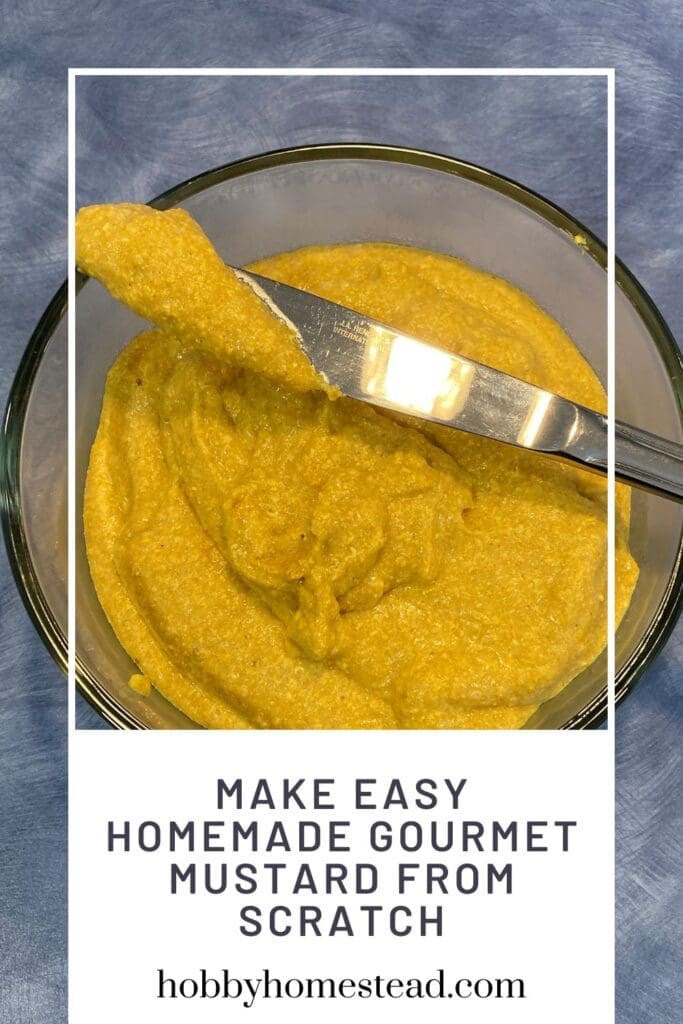
Delicious Homemade Gourmet Mustard is Easy to Make from Scratch
Whether you enjoy a mild mustard for sandwiches, a spicy mustard for a hot dog, or a grainy mustard for charcuterie boards and salad dressings, this recipe is a versatile base that can be customized with different flavors. Plus, it’s a great way to avoid store-bought mustard filled with preservatives.
See the video of this mustard being made.
Make Easy Homemade Gourmet Mustard from Scratch
As an Amazon Associate I earn from qualifying purchases.
Ingredients
- 1 ½ Cups Warm Water
- 9 Tablespoons Mustard Seeds yellow mustard seeds, brown mustard seeds, or a mix
- ¾ Teaspoon Salt
- ½ Teaspoon Turmeric
- ½ Teaspoon Garlic Powder
- ¼ Teaspoon Paprika
- 1/3 Cup Apple Cider Vinegar or distilled white vinegar
Instructions
- Blend the Ingredients. Add all the ingredients to a food processor, blender, or immersion blender container: water, mustard seeds, salt, turmeric, garlic powder, paprika, and vinegar. Blend until well combined and most of the whole mustard seeds are ground up.1 ½ Cups Warm Water, 9 Tablespoons Mustard Seeds, ¾ Teaspoon Salt, ½ Teaspoon Turmeric, ½ Teaspoon Garlic Powder, ¼ Teaspoon Paprika, 1/3 Cup Apple Cider Vinegar
- Cook to Enhance the Flavor. Transfer the mixture to a medium-sized saucepan and cook over medium-low heat, stirring continuously for about 10 minutes, or until you reach your desired thickness. Cooking the mustard helps mellow its bitter flavor.
- Strain for Smooth Mustard (Optional). If you prefer a smooth mustard like Dijon mustard, strain the mixture through a fine mesh sieve into a glass bowl. Stir to help it pass through.
- Let the Mustard Age. Pour the mustard into a glass jar or mason jar. Store it in the refrigerator for at least 3 days to allow the flavors to develop.
- Use your homemade mustard on sandwiches, burgers, pretzels, or as a dipping sauce.
Nutrition
Why Make Homemade Mustard?
- Control the Flavor – Adjust the heat level and sweetness to your liking by using different types of mustard seeds and liquids.
- Simple Ingredients – This homemade mustard recipe requires just a handful of pantry staples.
- Long Shelf Life – Stored in an airtight container like a mason jar, homemade mustard lasts for 4-6 months in the refrigerator.
- Healthier Alternative – No preservatives or artificial additives like store-bought mustard.
- Versatile Uses – Perfect for sandwiches, salad dressings, marinades, dips, and even homemade honey mustard!
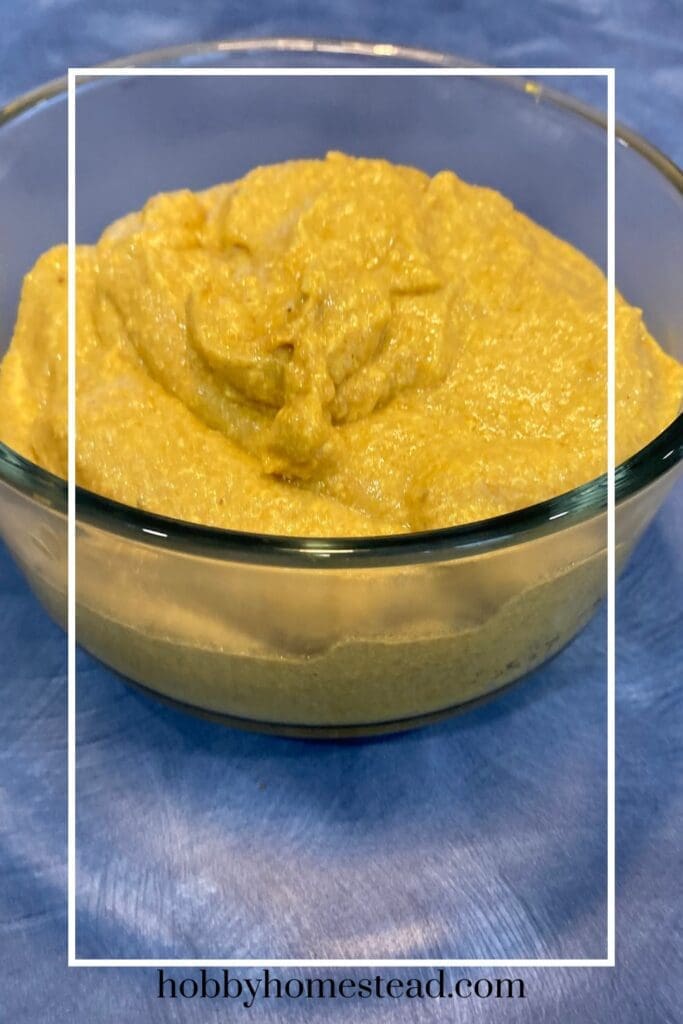
Mustard Variations and Customizations
1. Spicy Mustard
- Use black mustard seeds instead of yellow mustard seeds for extra heat.
- Add cayenne pepper for an extra spicy flavor.
2. Sweet Mustard
- Mix in brown sugar, maple syrup, or honey for a homemade honey mustard variation.
- Use fruit juices like apple or orange juice instead of water.
3. Grainy Mustard
- Blend for less time to keep more whole mustard seeds intact for a homemade whole grain mustard recipe.
- Swap white vinegar for white wine vinegar or dry white wine for more mellow mustard.
4. Mild Mustard
- Add a little bit more cold water to thin out the mustard and make it milder.
- Increase the aging time, as mustard ages, it tends to mellow in heat.
5. Herbal Mustard
- Stir in fresh herbs like thyme, rosemary, or basil before refrigerating.
- Infuse olive oil into the mustard for a smoother consistency.
Storing Your Homemade Mustard
- Keep mustard in a mason jar or airtight container in the refrigerator.
- For a longer shelf life, store it in small batches and avoid cross-contamination.
How long does mustard last?
The final product will last 4-6 months in the fridge, but the flavor improves over time.
Why does my mustard taste too bitter?
Mustard seeds contain natural compounds called allyl isothiocyanates, which create the strong, bitter flavor. Cooking the mustard over medium-low heat and allowing it to rest for a few days will mellow the bitterness.
Can I use dry mustard powder instead of whole seeds?
Yes! Substitute dry mustard powder for whole mustard seeds for a smoother mustard. Mix with cold liquid, like white vinegar or lemon juice, to activate the flavors.
What’s the difference between yellow, brown, and black mustard seeds?
- Yellow mustard seeds – Mild and commonly used for homemade yellow mustard.
- Brown mustard seeds – Spicier, often found in Dijon mustard and Indian cuisine.
- Black mustard seeds – The spiciest, used in hot mustard recipes.
Can I make mustard without vinegar?
Yes! Use lemon juice, fruit juices, or even a type of liquid like dry white wine for a different flavor profile.
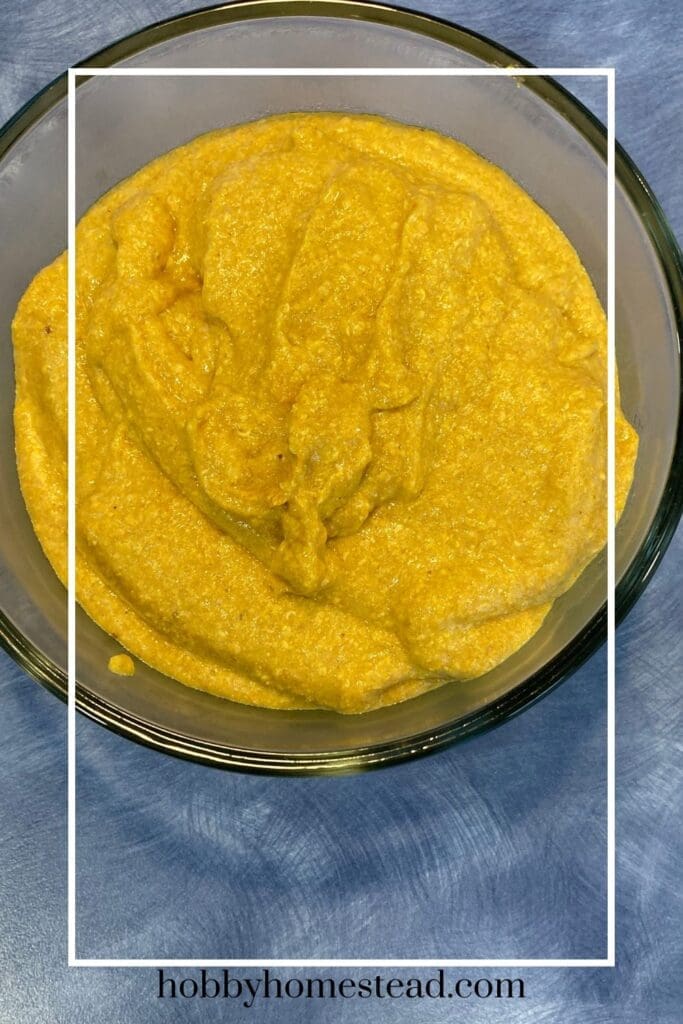
What is whole grain mustard?
Whole grain mustard is a type of mustard that includes whole mustard seeds, which gives it a coarser, grainy texture compared to smooth mustard varieties like Dijon or yellow mustard. The seeds are typically not ground into a fine paste, allowing the individual seeds to remain whole or partially crushed. This adds a satisfying crunch and more texture to the mustard.
Whole grain mustard can be made from different types of mustard seeds, such as yellow, brown, or black, and often includes ingredients like vinegar, water, salt, and sometimes sweeteners or spices, creating a balance of tangy, spicy, and sometimes sweet flavors. It’s commonly used in salad dressings, marinades, on sandwiches, and paired with meats like sausages and cold cuts. The flavor can range from mild to spicy, depending on the mustard seed variety and additional ingredients.
Can I use a spice grinder instead of a blender?
Absolutely! A spice grinder works well for grinding dry mustard seeds into a finer consistency.
Making your Mustard from Scratch is a rewarding and easy recipe that allows you to explore different flavors and customize your favorite condiment. Whether you love homemade honey mustard, hot mustard, or simple yellow mustard, this basic recipe is the perfect starting point. Next time you’re at the grocery store, grab some whole mustard seeds, experiment with unique ingredients, and enjoy the satisfaction of crafting your own good mustard from scratch!

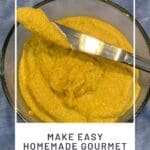
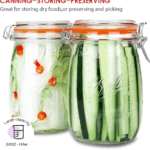
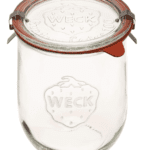


My family loved this!